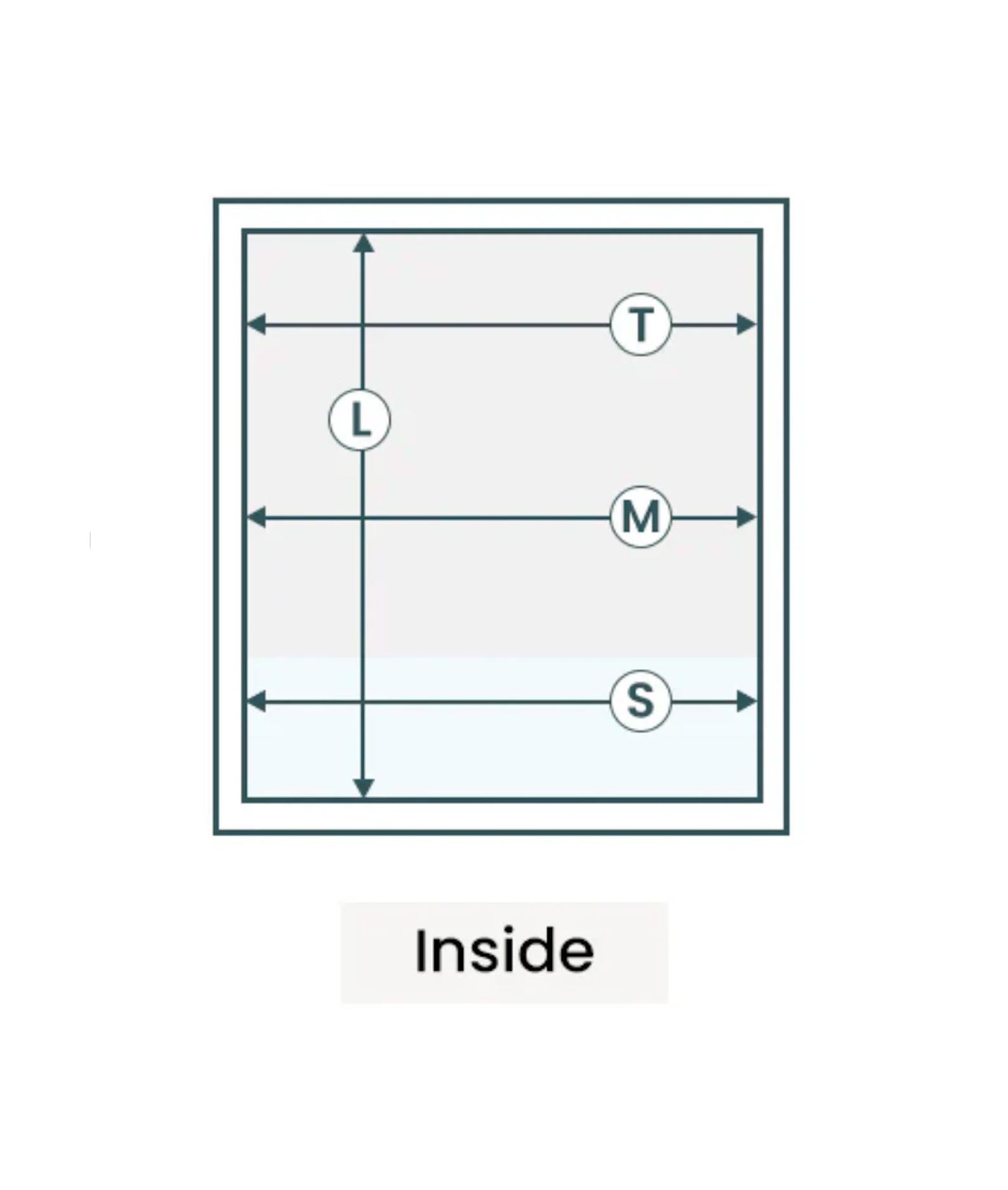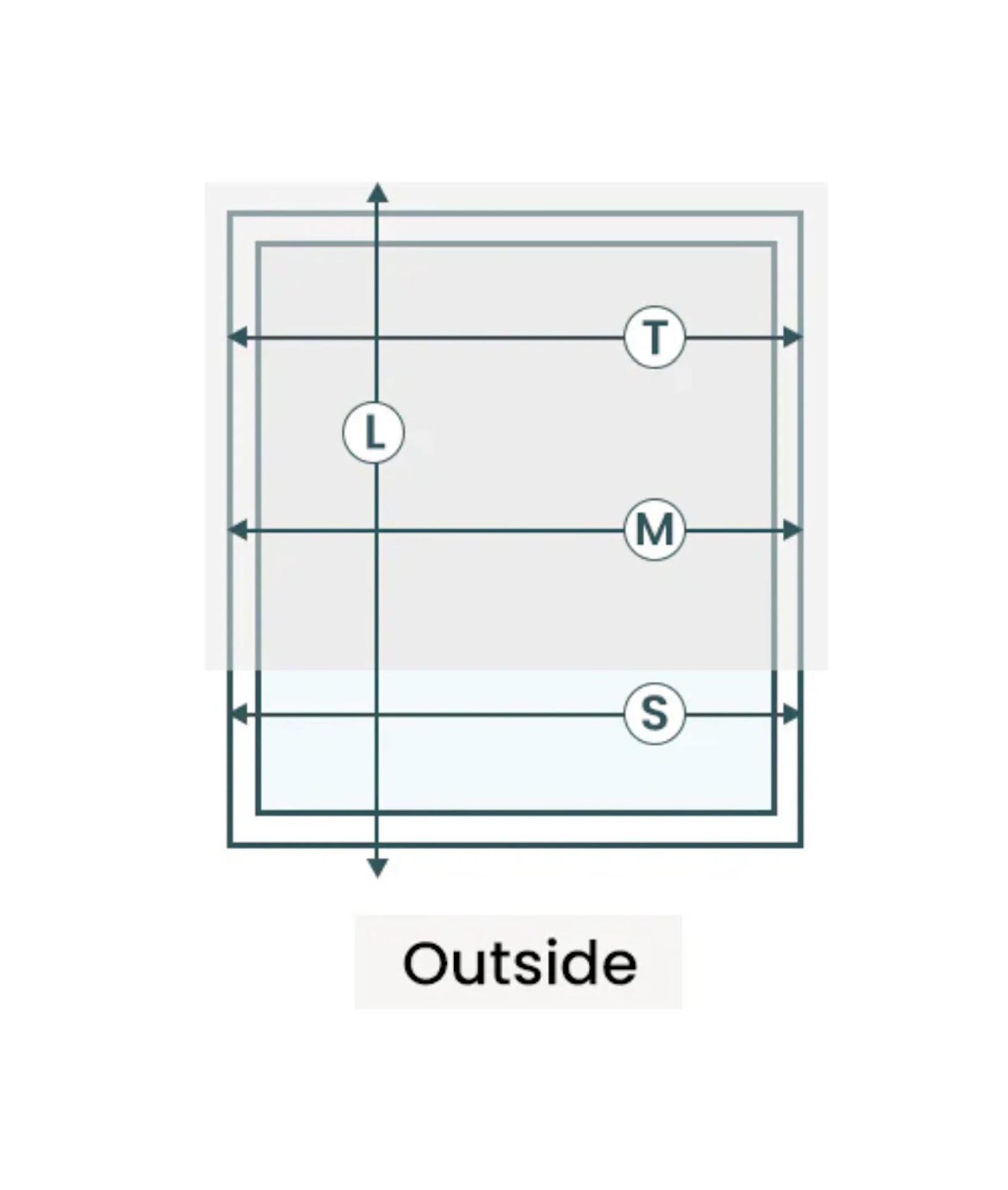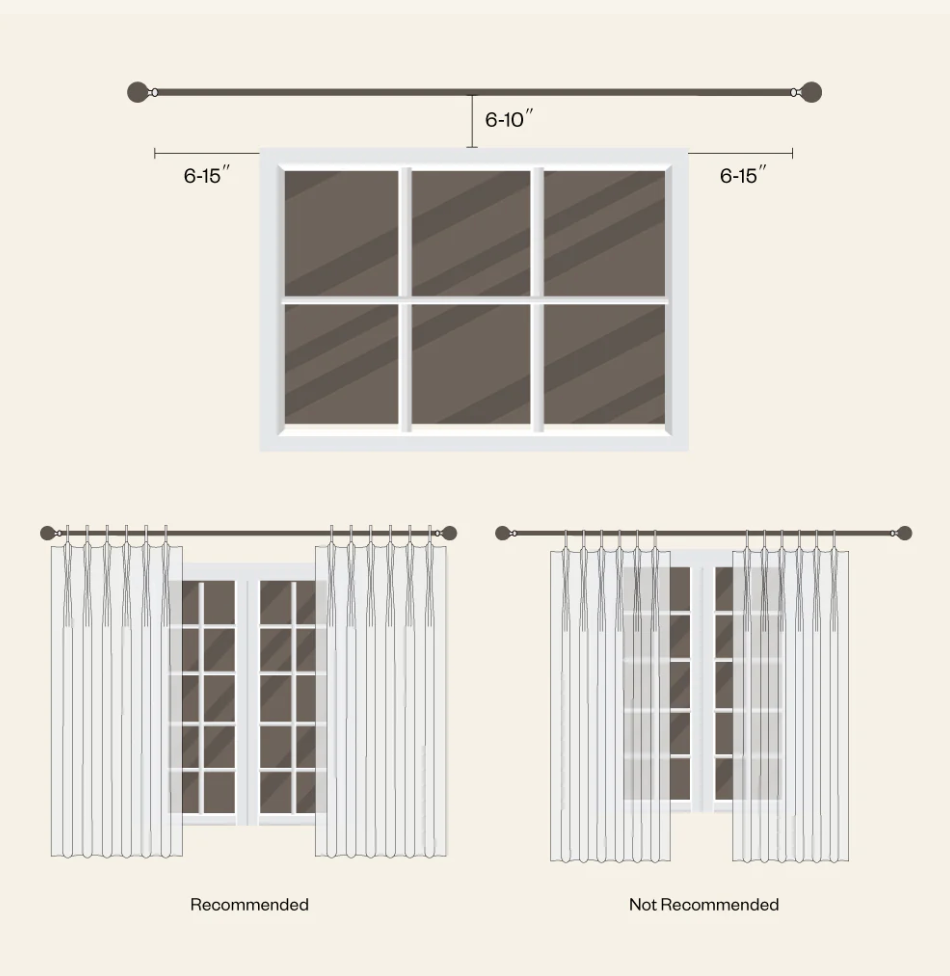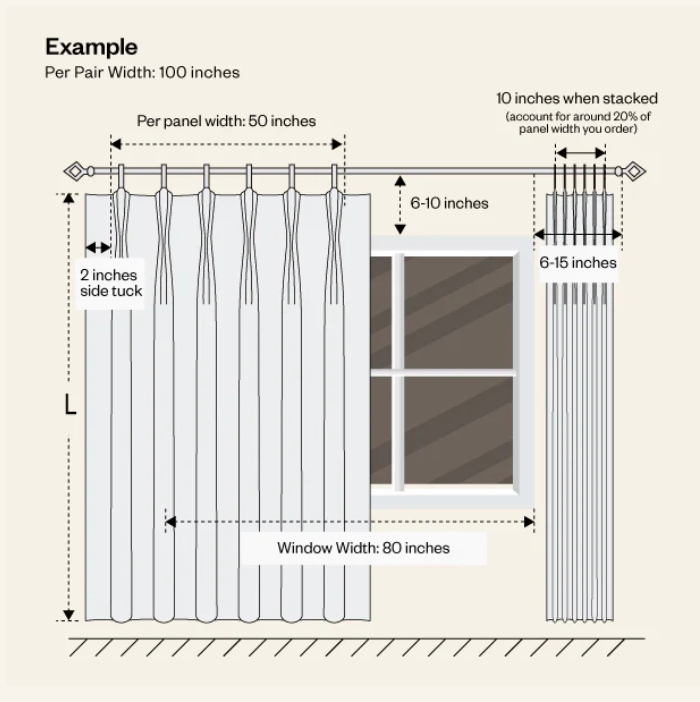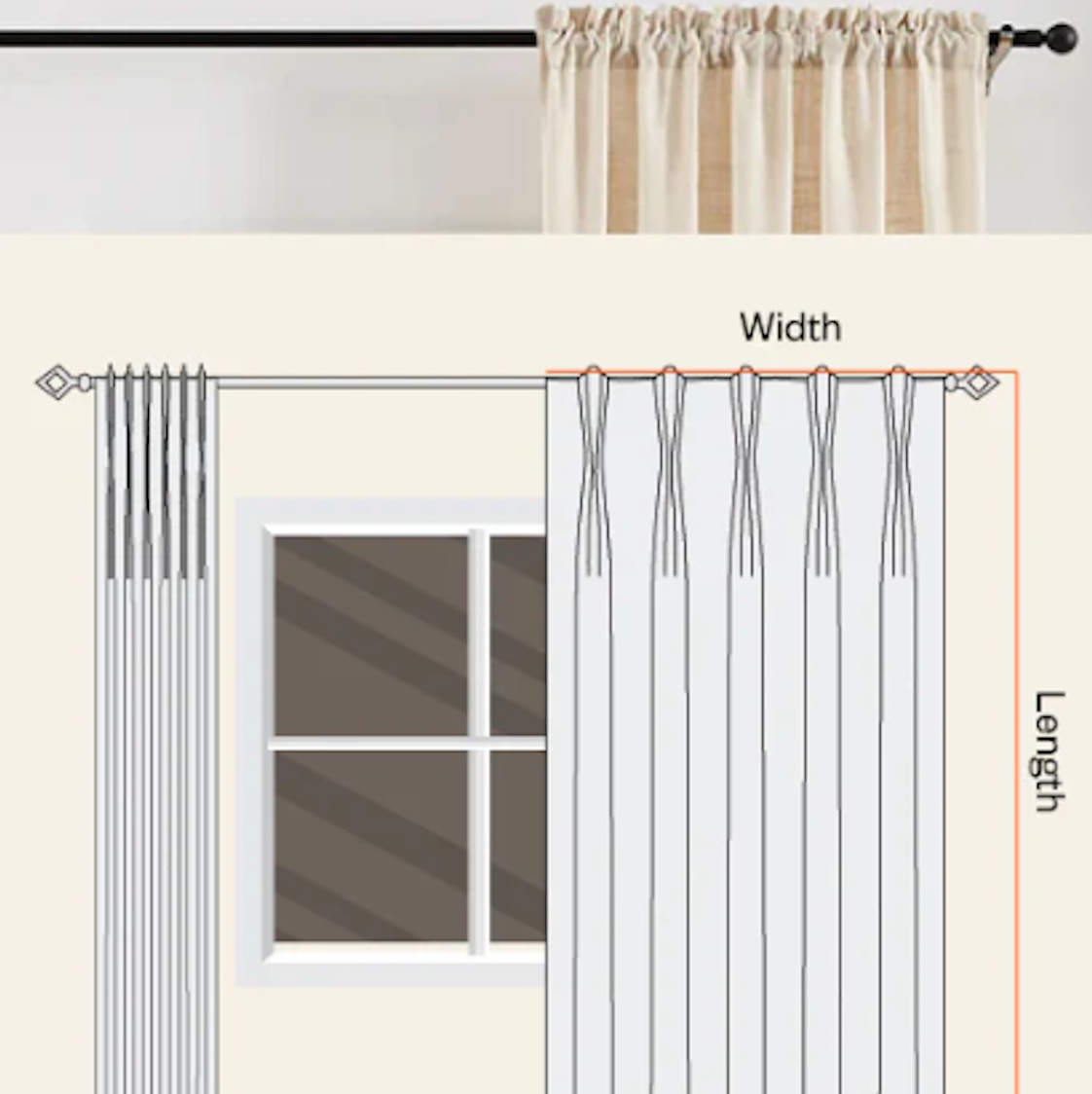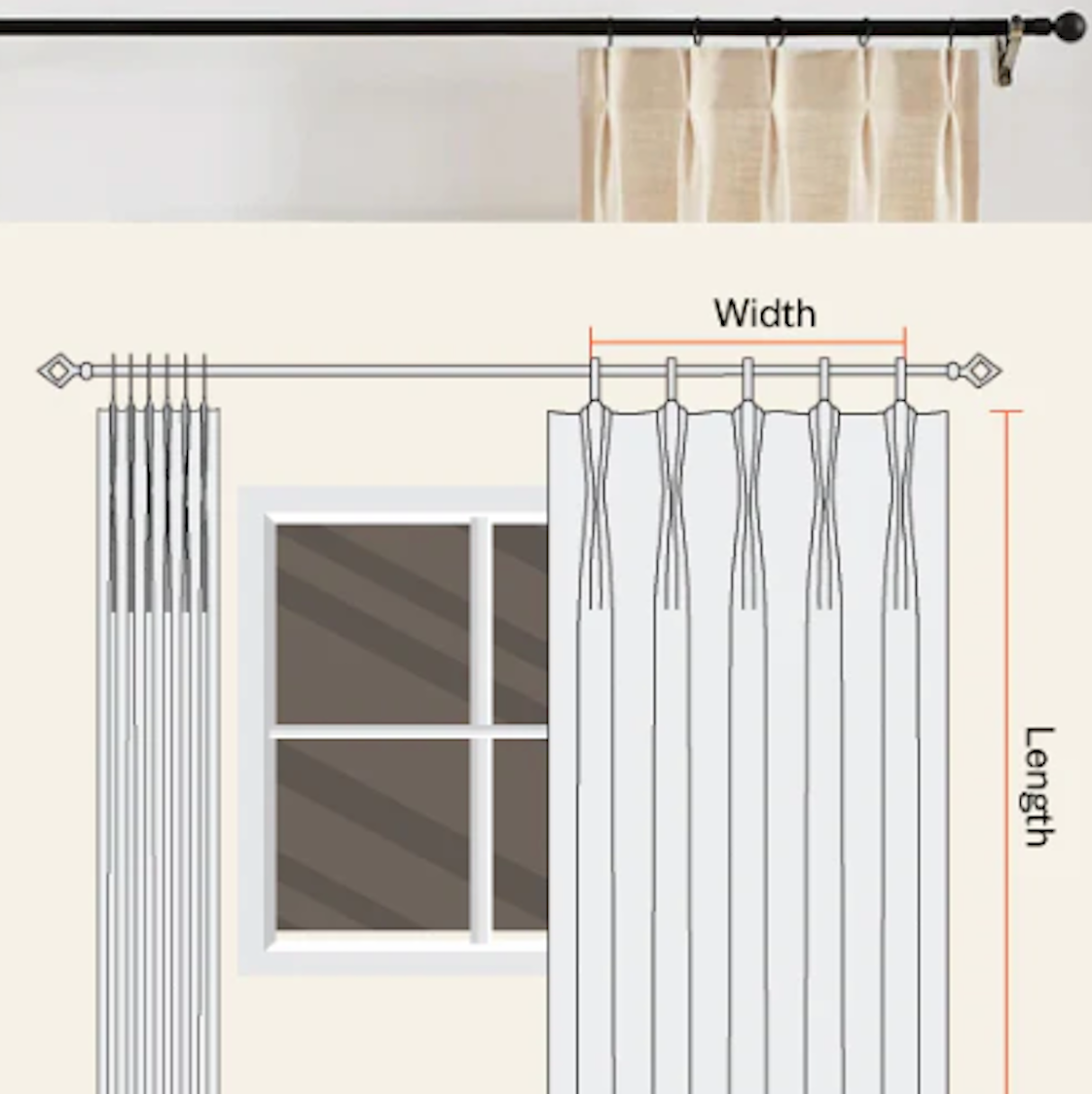How to Measure for Roman Shades?
Precise measurements are vital to achieve a perfect fit and smooth performance. There are two main mounting methods—inside mount and outside mount—each offering its own advantages
Two Primary Mounting Options:
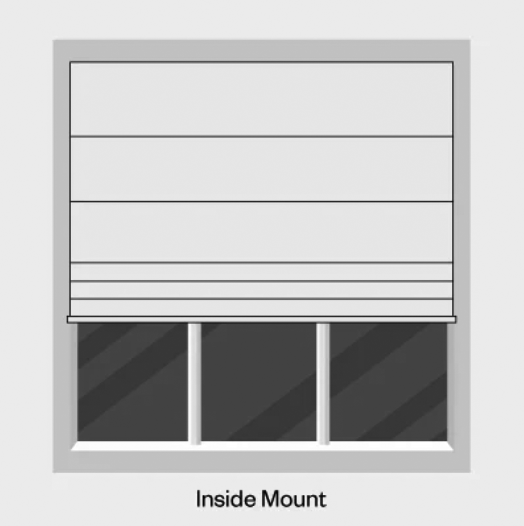
Inside Mount (Figure 1):
Fits inside the frame for a sleek, built-in look and keeps the trim visible. Requires at least 2” depth for proper installation.
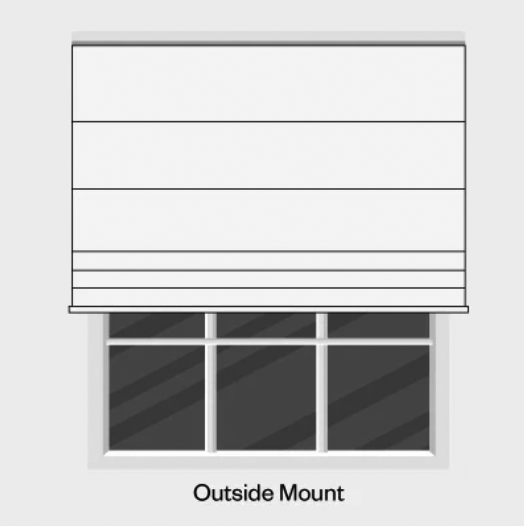
Outside Mount (Figure 2):
Placed outside the frame to hide flaws and create a bold appearance. Works for almost any window, even those with shallow or extra-deep sills.
Measuring for Different Mount Types:
Measuring for Inside Mount Shades:
Width: Measure the window frame's interior width at three locations—top, middle, and bottom. Use the narrowest measurement to guarantee the shade will fit properly inside the frame.
Height: Measure the height inside the frame at three points—left, middle, and right. Take the longest measurement to ensure the shade covers the entire window height.
Depth: Check the window frame’s depth to confirm there’s enough space for the mounting brackets and the shade.
Measuring for Outside Mount Shades:
- Width: Measure the width you need, ensuring it extends beyond the window frame to cover the trim and provide space for the brackets. It’s advised to add an extra 3 inches (1.5 inches per side) for improved light blocking and privacy.
- Height: Measure from your chosen top mounting point down to where you want the shade to finish, either at the window sill or lower. For better light control, consider adding 1.5 inches to the height above the window opening.
Additional Tips:
Use a Steel Tape Measure: For the most accurate measurements, opt for a steel tape measure rather than a cloth one.
Measure to the Nearest 1/8 Inch: Precision is essential, so avoid rounding off your measurements.
Check for Obstructions: Take note of any window hardware, handles, or other items that could obstruct the operation of the shade.
Factor in Mounting Hardware: Ensure there is enough clearance above the window for the mounting brackets, especially if you’re installing outside mounts.
How to Measure for Curtains?
Step 1:
Measure and Mark for Rod Installation
If your curtain rod is already installed, simply measure the length of the rod and note the measurement.
If the rod is not yet installed, begin by deciding where you want the rod to be positioned above and around the window frame. Consider the desired visual effect when determining the height.
- Height Above the Window Frame: For an enhanced appearance, curtain rods are commonly placed 6-10 inches above the window frame. This creates the illusion of a taller window. Use a pencil or masking tape to lightly mark this height as a guide.
- Width Beyond the Window Frame: Typically, adding 6-15 inches of width on each side of the window frame allows enough space for the curtains to stack neatly. Mark these points lightly with a pencil or use masking tape to ensure accurate placement.
Understand Neutral's Fullness Guidelines
To ensure your curtains look full and luxurious, the right amount of fullness should be added, depending on the style of the curtain header.
- Pleated Styles: The fabric fullness is already built into the design, with fullness ranging from 200-230%. This ensures your curtains maintain a rich, voluminous appearance.
- For pinch pleat, tailor pleat, inverted pleat, and goblet styles, use 2x fullness
- .For triple pleat and triple tailor pleat styles, use 2.3x fullness.
Step 2:
Calculate the Curtain Panel Width
Flat Top (Grommet, Rod Pocket, Back Tab, Tab Top, and Flat Panel)
To calculate the width per panel, use this formula:
Panel Width = Rod or Track Width x Fullness ÷ Number of Panels
Pleated Top (Pinch Pleat - Double/Triple, Euro Pleat - Double/Triple)
For pleated styles, the width per panel is calculated as:
Panel Width = Rod or Track Width ÷ Number of Panels
Ripple Fold
For ripple fold curtains, the width per panel is calculated as:
Panel Width = Rod or Track Width ÷ Number of Panels
(*Note: The top width is used for the calculation, while the bottom width will be approximately 2.1 times larger.)
Note: If you haven't yet selected a rod or track, estimate the rod/track width by adding 6-15" to the width of the window on each side. This will give you an approximate measurement for your rod or track.
Step 3:
Calculate the Curtain Panel Width
1. Calculate the Curtain Panel Length
Flat Top (Grommet, Rod Pocket, Back Tab)
To determine the length per panel, measure:
Panel Length = Distance from the top part above the rod + Distance from the rod to the floor + Desired bottom length
Pleated Top (Pinch Pleat - Double/Triple, Euro Pleat - Double/Triple)
For pleated styles, the panel length is calculated as:
Panel Length = Desired curtain top height to the floor + Bottom length
2. Ripple Fold
For ripple fold curtains, the length per panel is:
Panel Length = Distance from the bottom of the track to the floor + Bottom length
Different Bottom Length Options:
- 1/2" Above the Floor: Subtract 1/2" from the panel length
- Kiss the Floor: No adjustment needed (0)
- Puddling: Add 2-4" for a puddled effect at the floor





